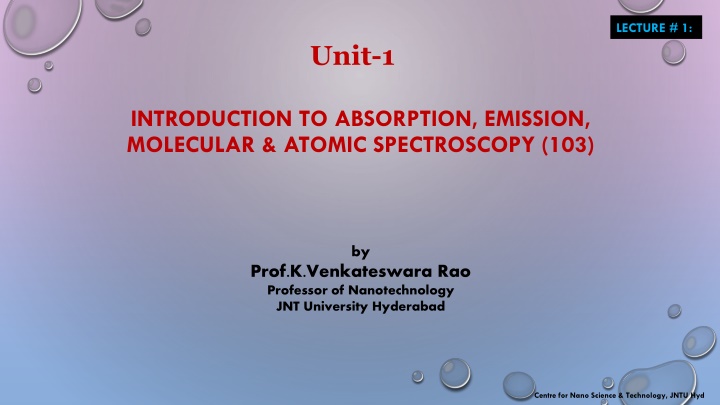Professional Curiosity Practice Guide: Safeguarding Responsibilities and Critical Thinking
All professionals interacting with children must be alert to safeguarding duties, avoid perceptual bias, and practice critical thinking to detect vulnerabilities and risks. Recent reviews underscore the importance of challenging assumptions, maintaining an open mind, and exploring multiple perspectives.
Download Presentation

Please find below an Image/Link to download the presentation.
The content on the website is provided AS IS for your information and personal use only. It may not be sold, licensed, or shared on other websites without obtaining consent from the author.If you encounter any issues during the download, it is possible that the publisher has removed the file from their server.
You are allowed to download the files provided on this website for personal or commercial use, subject to the condition that they are used lawfully. All files are the property of their respective owners.
The content on the website is provided AS IS for your information and personal use only. It may not be sold, licensed, or shared on other websites without obtaining consent from the author.
E N D
Presentation Transcript
LECTURE # 1: Unit-1 INTRODUCTION TO ABSORPTION, EMISSION, MOLECULAR & ATOMIC SPECTROSCOPY (103) by Prof.K.Venkateswara Rao Professor of Nanotechnology JNT University Hyderabad Centre for Nano Science & Technology, JNTU Hyd
NT & NEP-103 & 105 SPECTROSCOPIC, ELECTRICAL ,THERMAL AND MAGNETIC CHARACTERIZATION TECHNIQUES Unit-I: Introduction to Absorption, Emission, Molecular & Atomic spectroscopy: Terms Employed in Absorption Spectroscopy, Quantitative Aspects of Absorption Measurements, Emission Spectra, Sources, Instruments, Applications of Emission Spectroscopy. Theory of Fluorescence, Instruments, Applications. Theory of Flame Spectroscopy, Characteristics, Atomizers for Atomic Spectroscopy, Electron spectroscopy.
It was believed that light travels in a straight line. But this concept could not explain some important phenomenon like Interference, Refraction, Diffraction etc. To explain these phenomenon, light is supposed to travel in waves. Visible light is a form of energy. It can be explained by two complementary theories, the corpuscular theory and the wave theory. Centre for Nano Science & Technology, JNTU Hyd
According to the wave theory, light travels in the form of wave. It was believed that radiant energy is emitted by fluctuation of electrical charge and magnetic field. Like light, there are various forms of electromagnetic radiation such as Ultra-violet, Infra-red, X-rays, Radio-waves etc. E C M Planes of Electromagnetic waves Centre for Nano Science & Technology, JNTU Hyd
Few of the important characteristics of the electromagnetic radiation are: These are produced by the oscillation of electric charge and magnetic field residing on the atom . The electric and magnetic components are mutually perpendicular to each other and are coplanar. These are characterized by their wavelength of frequency of wavenumber. The energy carried by the an electromagnetic radiation is directly proportional to its frequency. The emission or absorption of radiation is quantized and each quantum of radiation is called a photon. All type of radiations travel with the same velocity and no medium is required for their propagation. They can travel through vacuum. When visible light (a group of electromagnetic radiation ) is passed through a prism, it is split up into seven colors which correspond to define wavelength to definite wavelength. This phenomenon is called dispersion. Wavelength , Wave number, Frequency ? Centre for Nano Science & Technology, JNTU Hyd
WHAT IS SPECTROSCOPY ? THE STUDY OF THE INTERACTION BETWEEN ELECTROMAGNETIC (EM) RADIATION AND MATTER 6 Centre for Nano Science & Technology, JNTU Hyd
The study of spectroscopy deals with emission as well as absorption spectra. Emission An emission spectra is produced by the emission of radiant energy by an exited atom. The excitation of atoms can be brought about thermally like heating the substrate strongly or electrically like passing electric Discharge through the vapours of the substrate at a very low pressure. When the electric discharge is passed through the vapours of the substrate, energy is absorbed and electrons in the ground state are promoted to meta stable states. When the electrons from the meta stable state jump to the lower energy state, then some energy of definite frequency is released as a radiation. If this radiation is analysed with the help of spectroscope, an emission spectrum is observed. Centre for Nano Science & Technology, JNTU Hyd
Absorption If electromagnetic radiation (of certain wavelength range ) are passed through the substrate under analysis of sometime, then radiation of certain wavelengths are absorbed by the substrate. The wavelength which is absorbed characterize some particular functional groups are present in the compound. This dark pattern of lines which corresponds to the wavelengths absorbed is called absorption spectra. After absorption, the transmitted light is analyzed by the spectrometer relative to the incident light of a given frequency. In absorption spectra energy may heat up the sample or is re-emitted. Centre for Nano Science & Technology, JNTU Hyd
Electromagnetic spectrum: The arrangement of all types of electromagnetic radiation in order of their increasing wavelength or decreasing frequency is known as complete electromagnetic spectrum. The visible spectrum represents only a small portion of the electromagnetic spectrum. Infra-red radiation have longer wavelength and are thus, less energetic. Cosmic rays carry high energy while radiowaves are least energetic. Microwaves have larger wavelength and are used in telephone transmission. Centre for Nano Science & Technology, JNTU Hyd
All types of radiation travels as waves with in the same velocity, yet they differ from one another in certain properties. For example X-rays can pass through glass and muscle tissue. Radiowaves can pass through air. Visible, Ultraviolet and Infra-red radiation can be bent by reflection or diffraction in a prism. Centre for Nano Science & Technology, JNTU Hyd
Electron Beam Back scattered Electron Auger Electrons X-ray Secondary Electron Cathode luminescence (Light) MATTER Elastically scattered Electron Un Scattered Beam In elastically Scattered Electron Centre for Nano Science & Technology, JNTU Hyd
DEFINITIONS: PERIOD (P) THE TIME REQUIRED FOR ONE CYCLE TO PASS A FIXED POINT IN SPACE. FREQUENCY (V) THE NUMBER OF CYCLES WHICH PASS A FIXED POINT IN SPACE PER SECOND. AMPLITUDE (A) THE MAXIMUM LENGTH OF THE ELECTRIC VECTOR IN THE WAVE (MAXIMUM HEIGHT OF A WAVE). WAVELENGTH ( ) THE DISTANCE BETWEEN TWO IDENTICAL ADJACENT POINTS IN A WAVE (USUALLY MAXIMA OR MINIMA). WAVENUMBER ( ) - THE NUMBER OF WAVES PER CM IN UNITS OF CM-1. 12 Centre for Nano Science & Technology, JNTU Hyd
DEFINITIONS: RADIANT POWER ( P ) - THE AMOUNT OF ENERGY REACHING A GIVEN AREA PER SECOND. UNIT IN WATTS (W) INTENSITY( I ) - THE RADIANT POWER PER UNIT SOLID ANGLE. 13 Centre for Nano Science & Technology, JNTU Hyd
Atomic absorption spectrometry has many uses in different areas of chemistry such as: Clinical analysis: Analysing metals in biological fluids and tissues such as whole blood, plasma, urine, saliva, brain tissue, liver, muscle tissue, semen. Pharmaceuticals: In some pharmaceutical manufacturing processes, minute quantities of a catalyst that remain in the final drug product. Water analysis: Analysing water for its metal content. Centre for Nano Science & Technology, JNTU Hyd
Applications of emission spectra Identifying elements in astronomical objects using their spectra Measuring the spectrum of light from a star can tell astronomers what the star is made of. Since each element emits or absorbs light only at particular wavelengths, astronomers can identify what elements are in the stars from the lines in their spectra. From studying the spectra of many stars we know that there are many different types of stars which contain different elements and in different amounts. Centre for Nano Science & Technology, JNTU Hyd
Determining velocities of galaxies using spectroscopy In the Doppler effect and how the frequency (and wavelength) of sound waves changes depending on whether the object emitting the sound is moving towards or away from you. The same thing happens to electromagnetic radiation. If the object emitting the light is moving towards us, then the wavelength of the light appears shorter (called blueshifted). moving away from us, then the wavelength of its light appears stretched out (called redshifted). If the object is The Doppler effect affects the spectra of objects in space depending on their motion relative to us on the earth. For example, the light from a distant galaxy that is moving away from us at some velocity will appear redshifted. This means that the emission and absorption lines in the galaxy's spectrum will be shifted to a longer wavelength (lower frequency). Knowing where each line in the spectrum would normally be if the galaxy was not moving and comparing it to the redshifted position, allows astronomers to precisely measure the velocity of the galaxy relative to the Earth. Centre for Nano Science & Technology, JNTU Hyd
Global warming and greenhouse gases The sun emits radiation over a range of wavelengths that are mainly in the visible part of the spectrum. Radiation at these wavelengths passes through the gases of the atmosphere to warm the land and the oceans below. The warm earth then radiates this heat at longer infrared wavelengths. Carbon dioxide (one of the main greenhouse gases) in the atmosphere has energy levels that correspond to the infrared wavelengths that allow it to absorb the infrared radiation. It then also emits at infrared wavelengths in all directions. This effect stops a large amount of the infrared radiation from getting out of the atmosphere, which causes the atmosphere and the earth to heat up. More radiation is coming in than is getting back out. So increasing the amount of greenhouse gases in the atmosphere increases the amount of trapped infrared radiation and therefore the overall temperature of the earth. The earth is a very sensitive and complicated system upon which life depends and changing the delicate balances of temperature and atmospheric gas content may have disastrous consequences if we are not careful. Centre for Nano Science & Technology, JNTU Hyd
Emission spectrum The of frequencies of electromagnetic radiation emitted due to an atom or molecule making a transition from a high energy state to a lower energy state. of a emission spectrum or chemical compound is the spectrum chemical element The energy of the emitted photon is equal to the energy difference between the two states. There are many possible electron transitions for each atom, and each transition has a specific energy difference. This collection of different transitions, leading to different radiated wavelengths, make up an emission spectrum. Each element's emission spectrum is unique. Therefore,spectroscopy can be used to identify the elements in matter of unknown composition. Similarly, the emission spectra of molecules can be used in chemical analysis of substances.
In analytical chemistry the technique is used for determining the concentration of a particular element (the analyte) in a sample to be analyzed. AAS can be used to determine over 70 different elements in solution or directly in solid samples used in pharmacology, biophysics and toxicology research. Atomic absorption spectroscopy was first used as an analytical technique, and the underlying principles were established in the second half of the 19th century by Robert Wilhelm Bunsen and Gustav Robert Kirchhoff, both professors at the University of Heidelberg, Germany Centre for Nano Science & Technology, JNTU Hyd
Principles The technique makes use of absorption spectrometry to assess the concentration of an analyte in a sample. It requires standards with known analyte content to establish the relation between the measured absorbance and the analyte concentration and relies therefore on the Beer- Lambert Law. In short, the electrons of the atoms in the atomizer can be promoted to higher orbitals (excited state) for a short period of time (nanoseconds) by absorbing a defined quantity of energy (radiation of a given wavelength). This amount of energy, i.e., wavelength, is specific to a particular electron transition in a particular element. In general, each wavelength corresponds to only one element, and the width of an absorption line is only of the order of a few picometers (pm), which gives the technique its elemental selectivity. The radiation flux without a sample and with a sample in the atomizer is measured using a detector, and the ratio between the two values (the absorbance) is converted to analyte concentration or mass using the Beer-Lambert Law. Centre for Nano Science & Technology, JNTU Hyd
Emission spectrum The emission spectrum of a chemical element or chemical compound is the spectrum of frequencies of electromagnetic radiation emitted due to an atom or molecule making a transition from a high energy state to a lower energy state. There are many possible electron transitions for each atom, and each transition has a specific energy difference. This collection of different radiated wavelengths, make up an emission spectrum. Each element's emission spectrum is unique. Therefore, spectroscopy can be used to identify the elements in matter of unknown composition. Similarly, the emission spectra of molecules can be used in chemical analysis of substances transitions, leading to different Centre for Nano Science & Technology, JNTU Hyd
Emission spectroscopy is a spectroscopic technique which examines the wavelengths of photons emitted by atoms or molecules during their transition from an excited state to a lower energy state. Each element emits a characteristic set of discrete wavelengths according to its electronic structure, and by observing these wavelengths the elemental composition of the sample can be determined. Emission spectroscopy developed in the late 19th century and efforts in theoretical explanation of atomic emission spectra eventually led to quantum mechanics. Centre for Nano Science & Technology, JNTU Hyd
Instrument An atomic emission spectrometer is similar in design to the instrumentation for atomic absorption. In fact, it is easy to adapt most flame atomic absorption spectrometers for atomic emission by turning off the hollow cathode lamp and monitoring the difference in the emission intensity when aspirating the sample and when aspirating a blank. Many atomic emission spectrometers, however, are dedicated instruments designed to take advantage of features unique to atomic emission, including the use of plasmas, arcs, sparks, and lasers as atomization and excitation sources, and an enhanced capability for multielemental analysis. Centre for Nano Science & Technology, JNTU Hyd
Atomization and Excitation Atomic emission requires a means for converting a solid, liquid, or solution analyte into a free gaseous atom. The same source of thermal energy usually serves as the excitation source. The most common methods are flames and plasmas, both of which are useful for liquid or solution samples. Solid samples may be analyzed by dissolving in a solvent and using a flame or plasma atomizer. Flame Sources Atomization and excitation in flame atomic emission is accomplished using the same nebulization and spray chamber assembly used in atomic absorption (Figure 10.42). The burner head consists of single or multiple slots, or a Meker style burner. Older atomic emission instruments often used a total consumption burner in which the sample is drawn through a capillary tube and injected directly into the flame. Centre for Nano Science & Technology, JNTU Hyd
Plasma Sources A plasma is a hot, partially ionized gas that contains an abundant concentration of cations and electrons. The plasmas used in atomic emission are formed by ionizing a flowing stream of argon gas, producing argon ions and electrons. A plasma s high temperature results from resistive heating as the electrons and argon ions move through the gas. Because plasmas operate at much higher temperatures than flames, they provide better atomization and a higher population of excited states. A schematic diagram of the inductively coupled plasma source (ICP) is shown in Figure 10.58. The ICP torch consists of three concentric quartz tubes, surrounded at the top by a radio-frequency induction coil. The sample is mixed with a stream of Ar using a nebulizer, and is carried to the plasma through the torch s central capillary tube. Plasma formation is initiated by a spark from a Tesla coil. Schematic diagram of an inductively coupled plasma torch. Centre for Nano Science & Technology, JNTU Hyd
Multielemental Analysis Atomic emission spectroscopy is ideally suited for multielemental analysis because all analytes in a sample are excited simultaneously. If the instrument includes a scanning monochromator, we can program it to move rapidly to an analyte s desired wavelength, pause to record its emission intensity, and then move to the next analyte s wavelength. This sequential analysis allows for a sampling rate of 3 4 analytes per minute. Another approach to a multielemental analysis is to use a multichannel instrument that allows us to simultaneously monitor many analytes. A simple design for a multichannel spectrometer couples a monochromator with multiple detectors that can be positioned in a semicircular array around the monochromator at positions corresponding to the wavelengths for the analytes (Figure 10.59). Schematic diagram of a multichannel atomic emission spectrometer for the simultaneous analysis of several elements. Centre for Nano Science & Technology, JNTU Hyd
Fluorescence Fluorescence, a type of luminescence, occurs in gas, liquid or solid chemical systems. Fluorescence is brought about by absorption of photons in the singlet ground state promoted to a singlet excited state. The spin of the electron is still paired with the ground state electron, unlike phosphorescence. As the excited molecule returns to ground state, it involves the emission of a photon of lower energy, which corresponds to a longer wavelength, than the absorbed photon. At room temperature most molecules occupy the lowest vibrational level of the ground electronic state, and on absorption of light they are elevated to produce excited states. The simplified diagram below shows absorption by molecules to produce either the first, S1, or second S2, excited state below figure. Centre for Nano Science & Technology, JNTU Hyd
Fluorescence spectroscopy It is a type of electromagnetic spectroscopy which analyses fluorescence from a sample. It involves using a beam of light, usually ultraviolet light, that excites the electrons in molecules of certain compounds and causes them to emit light; typically, but not necessarily ,visible light. A complementary technique is absorption spectroscopy. Molecules have various states referred to as energy levels. Fluorescence spectroscopy is primarily concerned with electronic and vibrational states. Generally, the species being examined has a ground electronic state (a low energy state) of interest, and an excited electronic state of higher energy. Within each of these electronic states are various vibrational states. In fluorescence spectroscopy, the species is first excited, by absorbing a photon, from its ground electronic state to one of the various vibrational states in the excited electronic state. Collisions with other molecules cause the excited molecule to lose vibrational energy until it reaches the lowest vibrational state of the excited electronic state. This process is often visualized with a Jablonski diagram. Centre for Nano Science & Technology, JNTU Hyd
Instrumentation Two general types of instruments exist: Filter fluorometers use filters to isolate the incident light and fluorescent light. Spectro fluorometers use diffraction grating monochromators to isolate the incident light and fluorescent light. Both types use the following scheme: The light from an excitation source passes through a filter or monochromator, and strikes the sample. A proportion of the incident light is absorbed by the sample, and some of the molecules in the sample fluoresce. The fluorescent light is emitted in all directions. Some of this fluorescent light passes through a second filter or monochromator and reaches a detector, which is usually placed at 90 to the incident light beam to minimize the risk of transmitted or reflected incident light reaching the detector. Centre for Nano Science & Technology, JNTU Hyd
Various light sources may be used as excitation sources, including lasers, LED, and lamps; xenon arcs and mercury-vapor lamps in particular. A laser only emits light of high irradiance at a very narrow wavelength interval, typically under 0.01 nm, which makes an excitation monochromator or filter unnecessary. The disadvantage of this method is that the wavelength of a laser cannot be changed by much. A mercury vapor lamp is a line lamp, meaning it emits light near peak wavelengths. By contrast, a xenon arc has a continuous emission spectrum with nearly constant intensity in the range from 300- 800 nm and a sufficient irradiance for measurements down to just above 200 nm. Filters and/or monochromators may be used in fluorimeters. A monochromator transmits light of an adjustable wavelength with an adjustable tolerance. The most common type of monochromator utilizes a diffraction grating, that is, collimated light illuminates a grating and exits with a different angle depending on the wavelength. The monochromator can then be adjusted to select which wavelengths to transmit. For allowing anisotropy measurements the addition of two polarization filters are necessary: One after the excitation monochromator or filter, and one before the emission monochromator or filter. Centre for Nano Science & Technology, JNTU Hyd
Applications Fluorescence spectroscopy is used in, among others, biochemical, medical, and chemical research fields for analysing organic compounds. There has also been a report of its use in differentiating malignant skin tumours from benign. Atomic Fluorescence Spectroscopy (AFS) techniques are useful in other kinds of analysis/measurement of a compound present in air or water, or other media, such as CVAFS which is used for heavy metals detection, such as mercury. Fluorescence can also be used to redirect photons, see fluorescent solar collector. Additionally, Fluorescence spectroscopy can be adapted to the microscopic level using microfluorimetry In analytical chemistry, fluorescence detectors are used with HPLC. Centre for Nano Science & Technology, JNTU Hyd
Theory of Flame Spectroscopy In flame emission spectrometry, the sample solution is nebulized (converted into a fine aerosol) and introduced into the flame where it is desolvated, vaporized, and atomized, all in rapid succession. Subsequently, atoms and molecules are raised to excited states via thermal collisions with the constituents of the partially burned flame gases. Upon their return to a lower or ground electronic state, the excited atoms and molecules emit radiation characteristic of the sample components. The emitted radiation passes through a monochromator that isolates the specific wavelength for the desired analysis. A photodetector measures the radiant power of the selected radiation, which is then amplified and sent to a readout device, meter, recorder, or microcomputer system. Combustion .flames provide a means of converting analytes in solution to atoms in the vapor phase freed of their chemical surroundings. These free atoms are then transformed into excited electronic states by one of two methods: absorption of additional thermal energy from the flame or absorption of radiant energy from an external source of radiation. In the first method, known as flame emission spectroscopy {FES), the energy from the flame also supplies the energy necessary to move the electrons of the free atoms from the ground state to excited states. The intensity of radiation emitted by these excited atoms returning to the ground state provides the basis for analytical determinations in FES. Centre for Nano Science & Technology, JNTU Hyd
Instrumentation For Flame Spectrometric Methods: The basic components of flame spectrometric instruments are discussed in this section. These components provide the following functions required in each method: (1) Deliver the analyte to the flame, (2) Induce the spectral transitions (absorption or emission) necessary for the determination of the analyte (3) Isolate the spectral lines required for the analysis, (4) Detect the increase or decrease in intensity of radiation at the isolated lines(s), and (5) Record these intensity data. Centre for Nano Science & Technology, JNTU Hyd
Pretreatment of Sample Flame FES requires that the analy1e be dissolved in a solution in order to undergo nebulization (see the next section). The wet chemistry necessary to dissolve the sample in a matrix suitable for either flame method is often an important component of the analytical process. The analyst must be aware of substances that interfere with the emission measurement. When these substances are in the sample, they must be removed or masked (complexed). Reagents used to dissolve samples must not contain substances that lead to interference problems. Sample Delivery The device that introduces the sample into the flame or plasma plays a major role in determining the accuracy of the analysis. The most popular sampling method is nebulization of a liquid sample to provide a steady flow of aerosol into a flame. An introduction system for liquid samples consists of three components: (1) a nebulizer that breaks up the liquid into small' droplets, (2) an aerosol. modifier that removes large droplets from the stream, allowing only droplets smaller than a certain size to pass, and (3) the flame or atomizer that converts the anaIyte into free atoms. Centre for Nano Science & Technology, JNTU Hyd
Nebulization Pneumatic nebulization is the technique used in most atomic spectroscopy determinations. The sample solution is introduced through an orifice into a high- velocity gas jet, usually the oxidant. The sample stream may intersect the gas stream in either a parallel or perpendicular manner (Figure 9.1a). Liquid is drawn through the sample capillary by the pressure differential generated by the high-velocity gas stream passing over the sample orifice. The liquid stream begins to oscillate, producing filaments. Finally, these filaments collapse to form a cloud of droplets in the aerosol modifier or spray chamber. In the spray chamber the larger droplets are removed from the sample stream by mixer paddles or broken up into smaller droplets by impact beads (Figure 9.1 b) or wall surfaces. The final aerosol, now a fine mist, is combined with the oxidizer/fuel mixture and carried into the burner (Figure 9.2). A typical distribution range of droplet diameters is shown in Figure m are trapped in the spray chamber and flow to waste. The distribution of drop sizes is a function of the solvent as well as the components of the sampling system. In AAS only a small percentage (usually 2% or 3%) of the nebulized analyte solution reaches the burner. 9.3. Droplets larger than about 20 Centre for Nano Science & Technology, JNTU Hyd
Atomization The atomization step must convert the analyte within the aerosol into free analyte atoms in the ground state for FES analysis. Very small sample volumes (5-100 ILL) or solid samples can be handled by flameless electrothermal methods. Flame Atomizers The sequence of events involved in converting a metallic element, M, from a dissolved salt, MX, in the sample solution to free M atoms in the flame is depicted in Figure 9.4. After the aerosol droplets containing 1v.IX enter the flame, the solvent is evaporated, leaving small particles of dry, solid 1v.IX. Next, solid 1v.IX is converted to NIX vapor. Finally, a portion of the MX molecules are dissociated to give neutral free atoms. The efficiency with which the flame produces neutral analyte atoms is of equal importance in all the flame techniques. If the events proceed vertically from the top down in Figure 9.4, the efficiency of free- atom production is high. Processes that branch horizontally interfere with the production of free analyte atoms. These processes include: (1) excitation and emission of radiation by MX(g) molecules, (2) reaction of M(g) atoms with flame components at high temperatures to produce molecules and ions that also absorb and emit radiation, and (3) formation of M+x ions, which, in addition to reducing the efficiency of free-atom production,. complicate the analysis by adding lines to the spectrum. The flame remains the most generally useful atomizer for atomic spectroscopy despite the developments in electrothermal atomization. A satisfactory flame source must Centre for Nano Science & Technology, JNTU Hyd
provide the temperature and fuel/oxidant ratio required for a given analysis. The maximum operating temperature of the flame is determined by the identities of the fuel and oxidant, whereas the exact flame temperature is fixed by the fuel/oxidant ratio. In addition, the spectrum of the flame itself should not interfere with the emission or absorption lines of the analytes. Components of the flame gases limit the usable range to wavelengths longer than 210 nm. Ionization Interference At elevated flame and furnace temperatures, atoms with low ionization potentials become ionized. Any ionization reduces the population of both the ground state and the excited state of neutral free atoms, thus lowering the sensitivity of the determination. This problem is readily overcome by adding an excess (ca. 100- fold) of a more easily ionized element such as K, Cs, or Sr to suppress ionization in both sample and calibration solutions. The more easily ionized atoms produce a large concentration of electrons in the vapor. These electrons, by mass action, suppress the ionization of analyte atoms. Thus, suppressant should be added to samples that contain variable amounts of alkali metals analyzed by acetylene/air flames to stabilize free- electron concentrations. The addition of suppressants is even more important in analyses that require the hotter acetylene/nitrous oxide flames. Centre for Nano Science & Technology, JNTU Hyd
Applications Most applications of FES have been the determination of trace metals, especially in liquid samples. It should be remembered that FES offers a simple, inexpensive, and sensitive method for detecting common metals, including the alkali and alkaline earths, as well as several transition metals such as Fe, Mn, Cu, and Zn. FES has been extended to include a number of nonmetals: H, B, C, N, P, As, O, S, Se, Te, halogens, and noble gases. FES detectors for P and S are commercially available for use in gas chromatography. FES has found wide application in agricultural and environmental analysis, industrial analyses of ferrous metals and alloys as well as glasses and ceramic materials, and clinical analyses of body fluids. FES can be easily automated to handle a large number of samples. Array detectors interfaced to a microcomputer system permit simultaneous analyses of several elements in a single sample. Centre for Nano Science & Technology, JNTU Hyd
Thank you Centre for Nano Science & Technology, JNTU Hyd
SPECTROSCOPIC ANALYSIS COVERS MOLECULAR SPECTROSCOPY ATOMIC SPECTROSCOPY 41
TO UNDERSTAND SPECTROSCOPY WE MUST UNDERSTAND ELECTROMAGNETIC RADIATION WHAT IS ELECTROMAGNETIC RADIATION? IS A FORM OF ENERGY THAT HAS BOTH WAVE AND PARTICLE PROPERTIES. FOR EXAMPLE: ULTRAVIOLET, VISIBLE, INFRARED, MICROWAVE, RADIO WAVE. 42
WAVE PROPERTIES EM RADIATION IS CONVENIENTLY MODELED AS WAVES CONSISTING OF PERPENDICULARLY OSCILLATING ELECTRIC AND MAGNETIC FIELDS, AS SHOWN BELOW. y x z Electric Field Magnetic Field Direction of propagation 43
o AT 90 TO THE DIRECTION OF PROPAGATION IS AN OSCILLATION IN THE ELECTRIC FIELD. o AT 90 TO THE DIRECTION OF PROPAGATION AND 90 FROM THE ELECTRIC FIELD OSCILLATION (ORTHAGONAL) IS THE MAGNETIC FIELD OSCILLATION. 44
WAVE PARAMETERS + Wavelength ( ) Electric Field Amplitude (A) 0 - Time or Distance WE USE SYMBOLS TO DESIGNATE THE VARIOUS PROPERTIES OF WAVES IS THE WAVELENGTH OF THE WAVES VIS THE FREQUENCY OF THE WAVES 45 C IS THE SPEED OF LIGHT
Basics of Light, E&M Spectrum, and X-rays Light can take on many forms. Radio waves, microwaves, infrared, visible, ultraviolet, X-ray and gamma radiation are all different forms of light. The energy of the photon tells what kind of light it is. Radio waves are composed of low energy photons. Optical photons--the only photons perceived by the human eye--are a million times more energetic than the typical radio photon. The energies of X-ray photons range from hundreds to thousands of times higher than that of optical photons. The speed of the particles when they collide or vibrate sets a limit on the energy of the photon. The speed is also a measure of temperature. (On a hot day, the particles in the air are moving faster than on a cold day.) Very low temperatures (hundreds of degrees below zero Celsius) produce low energy radio and microwave photons, whereas cool bodies like ours (about 30 degrees Celsius) produce infrared radiation. Very high temperatures (millions of degrees Celsius) produce X-rays.
MATERIALS RESPONSE TO RADIATION OR PARTICLES E&M radiation interacts with materials because electrons and molecules in materials are polarizable: (refraction, absorption) = n+ i k n = refraction, k = absorption Atoms/molecules Valence electrons Core electrons Ions, electrons and atoms incident on materials can interact with materials because they are either charged or can scatter from atomic cores
TECHNIQUES AND INFORMATION CONTENT Molecular Libration (hindered rotations) Molecular vibrations Electronic Absorption Valence band and shallow electronic levels (atoms) Deep electronic core levels (atoms) Infrared, Raman, EELS UV absorption UV photoemission Electron loss Microwave, THz Visible Fluorescence Luminescence X-ray photoemission (XPS, ESCA) Auger Electron (AES)
PHOTOELECTRON SPECTROSCOPY Photons in Electrons out Vacuum level Valence electrons Core electrons X-ray (photon) penetration into solid is large (~ microns) Electron escape from solid is only from shallow region (~ 5-10 ) because of short mean free path of electrons with energies between 10 and 1000 eV XPS is only sensitive to surface and near surface region
OPTICAL SPECTROSCOPY Photons in Photons out Large penetration into solid Low energy photons Can interact linearly (absorption) or non-linearly (Raman, harmonic generation) Non destructive Photons out























